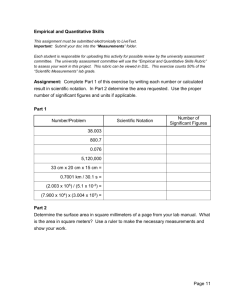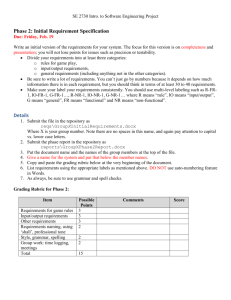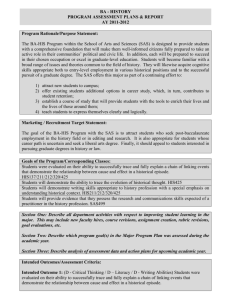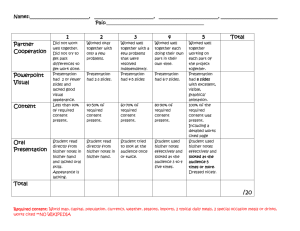Final Paper - Drew University
advertisement
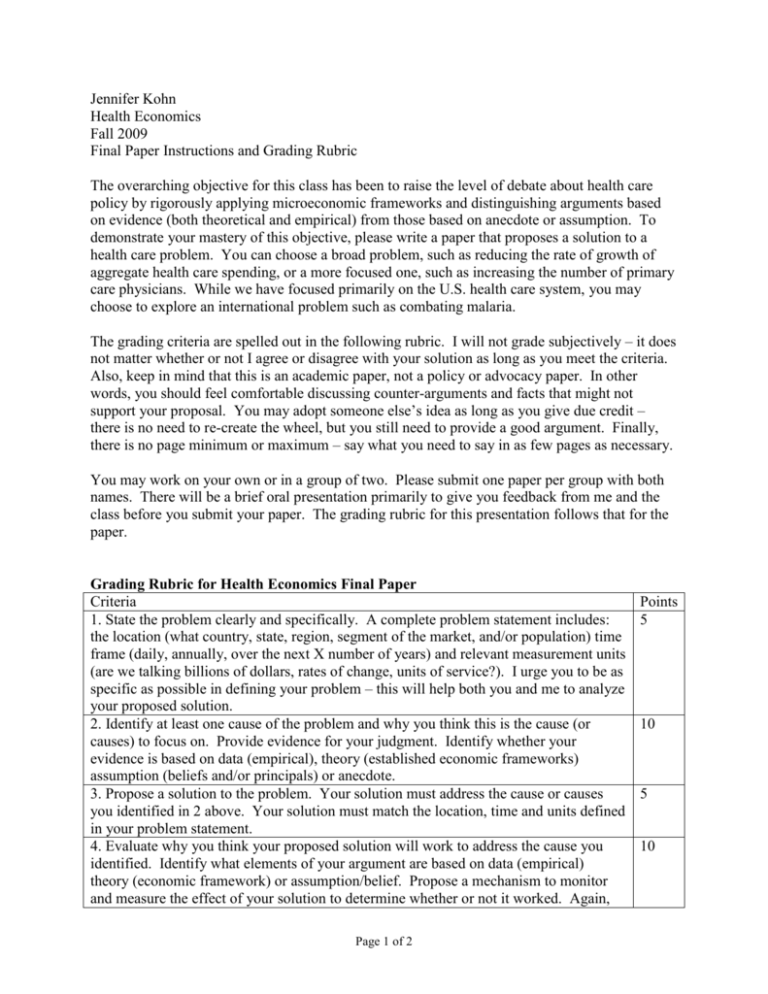
Jennifer Kohn Health Economics Fall 2009 Final Paper Instructions and Grading Rubric The overarching objective for this class has been to raise the level of debate about health care policy by rigorously applying microeconomic frameworks and distinguishing arguments based on evidence (both theoretical and empirical) from those based on anecdote or assumption. To demonstrate your mastery of this objective, please write a paper that proposes a solution to a health care problem. You can choose a broad problem, such as reducing the rate of growth of aggregate health care spending, or a more focused one, such as increasing the number of primary care physicians. While we have focused primarily on the U.S. health care system, you may choose to explore an international problem such as combating malaria. The grading criteria are spelled out in the following rubric. I will not grade subjectively – it does not matter whether or not I agree or disagree with your solution as long as you meet the criteria. Also, keep in mind that this is an academic paper, not a policy or advocacy paper. In other words, you should feel comfortable discussing counter-arguments and facts that might not support your proposal. You may adopt someone else’s idea as long as you give due credit – there is no need to re-create the wheel, but you still need to provide a good argument. Finally, there is no page minimum or maximum – say what you need to say in as few pages as necessary. You may work on your own or in a group of two. Please submit one paper per group with both names. There will be a brief oral presentation primarily to give you feedback from me and the class before you submit your paper. The grading rubric for this presentation follows that for the paper. Grading Rubric for Health Economics Final Paper Criteria 1. State the problem clearly and specifically. A complete problem statement includes: the location (what country, state, region, segment of the market, and/or population) time frame (daily, annually, over the next X number of years) and relevant measurement units (are we talking billions of dollars, rates of change, units of service?). I urge you to be as specific as possible in defining your problem – this will help both you and me to analyze your proposed solution. 2. Identify at least one cause of the problem and why you think this is the cause (or causes) to focus on. Provide evidence for your judgment. Identify whether your evidence is based on data (empirical), theory (established economic frameworks) assumption (beliefs and/or principals) or anecdote. 3. Propose a solution to the problem. Your solution must address the cause or causes you identified in 2 above. Your solution must match the location, time and units defined in your problem statement. 4. Evaluate why you think your proposed solution will work to address the cause you identified. Identify what elements of your argument are based on data (empirical) theory (economic framework) or assumption/belief. Propose a mechanism to monitor and measure the effect of your solution to determine whether or not it worked. Again, Page 1 of 2 Points 5 10 5 10 your mechanism should match your problem statement in location, time and units. 5. Write a professional paper. Use clear organization (headings, page numbers) proper footnotes and bibliography, grammar and spelling. Please review the University’s policy on plagiarism. Total Points 5 35 Grading Rubric Oral Presentation Criteria Points 1. State the problem clearly and specifically. A complete problem statement includes: 1 the location (what country, state, region, segment of the market, and/or population) time frame (daily, annually, over the next X number of years) and relevant measurement units (are we talking billions of dollars, rates of change, units of service?). I urge you to be as specific as possible in defining your problem – this will help both you and me to analyze your proposed solution. 2. Identify at least one significant cause of the problem and why you think this is the 1 cause (or causes) to focus on. Provide evidence for your judgment. Identify whether your evidence is based on data (empirical), theory (established economic frameworks) assumption (beliefs and/or principals) or anecdote. 3. Propose a solution to the problem. Your solution must address the cause or causes 1 you identified in 2 above. Your solution must match the location, time and units defined in your problem statement. 4. Evaluate why you think your proposed solution will work to address the cause you 1 identified. Propose a mechanism to monitor and measure the effect of your solution to determine whether or not it worked. Again, your mechanism should match your problem statement in location, time and units. 5. Be brief – you must stay within the 5 minute time frame. This will require you to be .5 judicious about what you include – you can’t include everything in your paper. And this short time limit will require you to practice. 6. Respond to questions. Listen carefully to the question and address the question asked, .5 not the question you want to answer.. Total Points 5 Page 2 of 2
